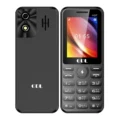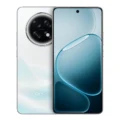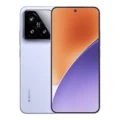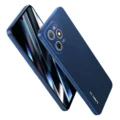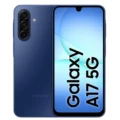iPhone 16 Pro Max vs iPhone 17 Pro Max
Between the iPhone 16 Pro Max and the rumored iPhone 17 Pro Max, the main differences start with performance and memory. The iPhone 16 Pro Max comes with the A18 Pro chip and 8 GB RAM, while the iPhone 17 Pro Max is expected to launch with the newer A19 Pro chip and a bigger 12 GB RAM. This means the iPhone 17 Pro Max should handle multitasking and high-end apps more smoothly. Both phones offer up to 1TB storage, so heavy users get the same space, but the 17 Pro Max seems future-ready with better processing power.
When it comes to display and camera, both models are very similar, offering 120Hz refresh rate, LTPO Super Retina XDR OLED, HDR10, and Dolby Vision. The iPhone 16 Pro Max has a slightly larger 6.9-inch screen compared to the 6.8-inch display of the 17 Pro Max, but the 17 Pro Max has a newer ceramic shield generation. On the camera side, both have powerful triple setups with 48MP wide, telephoto, and ultrawide lenses, but the iPhone 17 Pro Max upgrades the selfie camera to 24MP, compared to 12MP on the 16 Pro Max. This makes it more attractive for users who prioritize selfies and video calls.
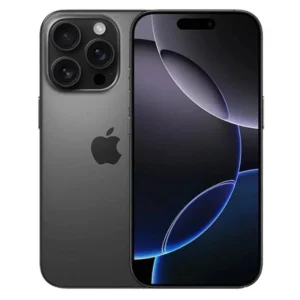
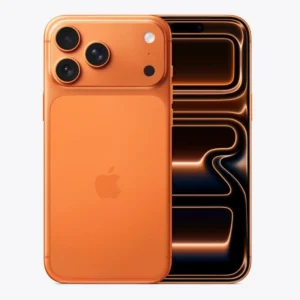
| |
| Price | ৳ 208,000.00 ৳ 147,000.00 |
| Our Rating | |
| Brand | Apple Apple |
| Category | Smart Phones Smart Phones |
Price in BD
| Expected Price | 1,47,000 TK |
| Official | 256GB (SG) - 2,08,000 TK |
| Official | 512GB (SG) - 2,39,200 TK |
| Official | 1TB (SG) - 2,95,999 TK |
| Unofficial | 256GB (SG) - 1,55,000 TK |
| Unofficial | 512GB (SG) - 1,82,000 TK |
| Unofficial | 1TB (SG) - 1,98,000 TK |
| Unofficial | 512GB (USA) - 1,65,000 TK |
| Unofficial | 1TB (USA) - 1,90,000 TK |
General Info
| Announced | 9 September, 2024 9 September, 2025 |
| Status | Available Coming Soon |
| Released | 20 September, 2024 19 September, 2025 |
| Brand | Apple Apple |
| Model | iPhone 16 Pro Max iPhone 17 Pro Max |
| Made By | USA |
Network
| Technology | GSM / CDMA / HSPA / EVDO / LTE / 5G GSM / CDMA / HSPA / EVDO / LTE / 5G |
| 2G bands |
GSM 850 / 900 / 1800 / 1900 CDMA 800 / 1900 GSM 850 / 900 / 1800 / 1900 CDMA 800 / 1900 |
| 3G bands |
HSDPA 850 / 900 / 1700(AWS) / 1900 / 2100 CDMA2000 1xEV-DO HSDPA 850 / 900 / 1700(AWS) / 1900 / 2100 CDMA2000 1xEV-DO |
| 4G bands |
1, 2, 3, 4, 5, 7, 8, 12, 13, 17, 18, 19, 20, 25, 26, 28, 30, 32, 34, 38, 39, 40, 41, 42, 48, 53, 66 - A3296 1, 2, 3, 4, 5, 7, 8, 12, 13, 14, 17, 18, 19, 20, 25, 26, 28, 29, 30, 32, 34, 38, 39, 40, 41, 42, 48, 53, 66, 71 - A3084 1, 2, 3, 4, 5, 7, 8, 11, 12, 13, 14, 17, 18, 19, 20, 21, 25, 26, 28, 29, 30, 32, 34, 38, 39, 40, 41, 42, 48, 53, 66, 71 - A3295 1, 2, 3, 4, 5, 7, 8, 12, 13, 17, 18, 19, 20, 25, 26, 28, 30, 32, 34, 38, 39, 40, 41, 42, 48, 66 - A3297 LTE |
| 5G bands |
1, 2, 3, 5, 7, 8, 12, 20, 25, 26, 28, 30, 38, 40, 41, 48, 53, 66, 70, 75, 76, 77, 78, 79 SA/NSA/Sub6 - A3296 1, 2, 3, 5, 7, 8, 12, 14, 20, 25, 26, 28, 29, 30, 38, 40, 41, 48, 53, 66, 70, 71, 75, 76, 77, 78, 79, 258, 260, 261 SA/NSA/Sub6/mmWave - A3084 1, 2, 3, 5, 7, 8, 12, 14, 20, 25, 26, 28, 29, 30, 38, 40, 41, 48, 53, 66, 70, 71, 75, 76, 77, 78, 79 SA/NSA/Sub6 - A3295 1, 2, 3, 5, 7, 8, 12, 20, 25, 26, 28, 30, 38, 40, 41, 48, 66, 70, 75, 76, 77, 78, 79 SA/NSA/Sub6 - A3297 SA/NSA/Sub6 - International SA/NSA/Sub6/mmWave - USA |
| VoLTE | |
| Speed | HSPA, LTE, 5G, EV-DO Rev.A 3.1 Mbps HSPA, LTE, 5G, EV-DO Rev.A 3.1 Mbps |
Body
| Dimensions | 163 x 77.6 x 8.3 mm (6.42 x 3.06 x 0.33 in) 163.4 x 78 mm (6.43 x 3.07 in) |
| Thickness | 8.8 mm |
| Weight | 227 g (8.01 oz) 233 g (8.22 oz) |
| SIM Slot | Hybrid SIM |
| SIM SIM (Subscriber Identity Module) is a small card that contains mobile network subscriber's account information. This allows the phone using the card to attach to a mobile network. The SIM card is most commonly associated with GSM and UMTS mobile networks. Moving a SIM card from one phone to another allows a subscriber to switch mobile phones without having to contact their mobile network carrier. SIM cards can also be used by a phone to store limited amounts of data, such as phone numbers and text messages. |
Nano-SIM + eSIM + eSIM (max 2 at a time; International) / eSIM + eSIM (8 or more, max 2 at a time; USA) / Nano-SIM + Nano-SIM (China)
Nano-SIM + eSIM + eSIM (max 2 at a time; International) eSIM + eSIM (8 or more, max 2 at a time; USA) Nano-SIM + Nano-SIM (China) |
| Build | Glass front, glass back, titanium frame (grade 5) Glass front (Ceramic Shield 2), aluminum alloy frame, aluminum alloy back/ glass back (Ceramic Shield) |
| Colors | Black Titanium, White Titanium, Natural Titanium, Desert Titanium Silver, Cosmic Orange, Deep Blue |
| IP Rating | IP68 dust tight and water resistant (immersible up to 6m for 30 min) IP68 dust tight and water resistant (immersible up to 6m for 30 min) |
| Models | A3296, A3084, A3295, A3297, iPhone17,2 |
| Others | Apple Pay (Visa, MasterCard, AMEX certified) Apple Pay (Visa, MasterCard, AMEX certified) |
Display
| Display Type Display Technology => A number of display technologies and types used in mobile phones => TFT (Thin Film Transistor), IPS (In-Place Switching), OLED (Organic Light Emitting Diode), AMOLED (Active-Matrix Organic Light-Emitting Diode), Super AMOLED (an even advanced version of AMOLED), Resistive Touchscreen (Resistive touchscreens contain two layer of conductive material with a very small gap between them which acts as a resistance), Capacitive Touchsceen (Capacitive touchscreen technology consists of a layer of glass coated with a transparent conductor) | LTPO Super Retina XDR OLED LTPO Super Retina XDR OLED |
| Size | 6.9 inches, 115.6 cm2 6.9 inches, 115.6 cm2 |
| Screen to Body | ~91.4% ~90.7% |
| Features | HDR10, Dolby Vision HDR10, Dolby Vision |
| Brightness | 1000 nits (typ), 2000 nits (HBM) 1000 nits (typ), 1600 nits (HBM), 3000 nits (peak) |
| Refresh Rate | 120Hz 120Hz |
| Resolution | 1320 x 2868 pixels 1320 x 2868 pixels |
| Aspect Ratio | 19.5:9 19.5:9 |
| Pixel Density Pixel Density (PPI) is refers to the concentration of pixels on a particular display, measured in pixels per inch (ppi). Pixel density is calculated by dividing the diagonal pixel resolution of a display by its diagonal size, higher pixel density better display quality. | ~460 ppi ~460 ppi |
| Protection | Ceramic Shield glass (2024 gen) Ceramic Shield 2 |
| Bezel-less | Yes with punch-hole display |
| Touch Screen | Capacitive Touchscreen, Multi-touch Capacitive Touchscreen, Multi-touch |
| Others | Always-On display Anti-reflective coating |
Performance
| Chipset Chipset is a group of integrated circuits designed to perform one or a more dedicated functions, often with real time computing constraints, Popular smartphones are equipped with more advanced embedded chipsets that can do many different tasks depending on their programming. | Apple A18 Pro (3 nm) Apple A19 Pro (3 nm) |
| Fabrication | 3 nm |
| CPU CPU (Central Processing Unit) mostly known as processors, CPU processes instructions in order to carry out certain functions that make your device operate properly. Processors are often described as the brain of computers, smartphones and tablets, Smartphones and tablets rely on processors to carry out their every task, Processors are an incredibly important factor in selecting any type of computing device, including your smartphone. | Hexa-core (2x4.05 GHz + 4x2.42 GHz) Hexa-core |
| CPU Cores | 6 cores |
| GPU GPU (Graphics Processing Unit) is a single-chip processor designed to rapidly manipulate and alter memory to accelerate the creation of images in a frame buffer intended for output to a display, This includes things such as lighting effects, object transformations, and 3D motion. | Apple GPU (6-core graphics) Apple GPU (6-core graphics) |
| Architecture | 64-bit |
| OS | iOS 18, upgradable to iOS 18.5 iOS 26 |
Memory
| RAM RAM (Random Access Memory) is a type of computer memory that can be accessed randomly, any byte of memory can be accessed without touching the preceding bytes that allows information to be stored and accessed quickly from random locations. RAM is the most common type of memory found in computer systems, smartphones, tablets and other electronic devices. | 8 GB 12 GB |
| ROM | 256 GB, 512 GB, 1 TB 256 GB, 512 GB, 1 TB |
| Card Slot Memory Card Slot is a special slot for inserting a memory card. Memory cards allow you to expand the phone's built-in memory, A memory card (sometimes called a flash memory card or a storage card) is a small storage medium used to store data such as text, pictures, audio, and video, for use on small, portable or remote computing devices such as mobile phones, mp3 players, digital cameras. | No No |
| UFS | NVMe NVMe |
Main Camera
| Triple |
48 MP, f/1.8, 24mm (wide), 1/1.28", 1.22µm, dual pixel PDAF, sensor-shift OIS 12 MP, f/2.8, 120mm (periscope telephoto), 1/3.06", 1.12µm, dual pixel PDAF, 3D sensor‑shift OIS, 5x optical zoom 48 MP, f/2.2, 13mm (ultrawide), 1/2.55", 0.7µm, PDAF, TOF 3D LiDAR scanner (depth) 48 MP, f/1.6, 24mm (wide), 1/1.28", 1.22µm, dual pixel PDAF, sensor-shift OIS 48 MP, f/2.8, 100mm (periscope telephoto), 1/2.55", 0.7µm, PDAF, 3D sensor‑shift OIS 48 MP, f/2.2, 13mm, 120˚ (ultrawide), 1/2.55", 0.7µm, PDAF TOF 3D LiDAR scanner (depth) |
| OIS | Yes |
| Features | HDR (photo/panorama) HDR (photo/panorama) |
| Flash Flash Light => There is commonly two types of flash lights are used in camera mobile phones, LED Flash (LED flash offers lower power consumption with drive circuitry that takes up very little room, LEDs can be strobed faster than any other light source), Xenon Flash (xenon flash produces an extremely intense full-spectrum white light for a very short duration) | Dual-LED dual-tone flash Dual-LED dual-tone flash |
| Video Recording | 4K@24/25/30/60/100/120fps, 1080p@25/30/60/120/240fps, 10-bit HDR, Dolby Vision HDR (up to 60fps), ProRes, 3D (spatial) video/audio, stereo sound rec. 4K@24/25/30/60/100/120fps, 1080p@25/30/60/120/240fps, 10-bit HDR, Dolby Vision HDR (up to 60fps), ProRes, ProRes RAW, Apple Log 2, 3D (spatial) video/audio, stereo sound rec. |
| Autofocus | |
| Settings | Exposure compensation, ISO control Exposure compensation, ISO control |
| Zoom | 5x optical zoom 4x optical zoom |
| Resolution | 8000 x 6000 Pixels |
Selfie Camera
| Single |
12 MP, f/1.9, 23mm (wide), 1/3.6", 1.0µm, PDAF, OIS SL 3D, (depth/biometrics sensor)
18 MP multi-aspect, f/1.9, (wide), PDAF, OIS SL 3D, (depth/biometrics sensor) |
| Features | HDR, Dolby Vision HDR, 3D (spatial) audio, stereo sound rec. HDR, Dolby Vision HDR, 3D (spatial) audio, stereo sound rec., ProRes RAW, Apple Log 2 |
| Video Recording | 4K@24/25/30/60fps, 1080p@25/30/60/120fps, gyro-EIS 4K@24/25/30/60fps, 1080p@25/30/60/120fps, gyro-EIS |
Sound
| Loudspeaker | |
| 3.5mm jack | |
| Others | with stereo speakers with stereo speakers |
Connectivity
| WLAN Wi-Fi is a popular wireless networking technology using radio waves to provide high-speed network connections that allows devices to communicate without cords or cables, Wi-Fi is increasingly becoming the preferred mode of internet connectivity all over the world. | Wi-Fi 802.11 a/b/g/n/ac/6e/7, tri-band, hotspot Wi-Fi 802.11 a/b/g/n/ac/6e/7, tri-band, hotspot |
| Bluetooth Bluetooth is a wireless communications technology for exchanging data between mobile phones, headsets, computers and other network devices over short distances without wires, Bluetooth technology was primarily designed to support simple wireless networking of personal consumer devices. | 5.3, A2DP, LE 6.0, A2DP, LE |
| Positioning | GPS (L1+L5), GLONASS, GALILEO, BDS, QZSS, NavIC GPS (L1+L5), GLONASS, GALILEO, BDS, QZSS, NavIC |
| NFC NFC (Near field communication) is a set of standards for smartphones and similar devices to establish peer-to-peer radio communications with each other by touching them together or bringing them into proximity, usually no more than a few inches. | |
| Infrared Infrared connectivity is an old wireless technology used to connect two electronic devices. It uses a beam of infrared light to transmit information and so requires direct line of sight and operates only at close range. | |
| Radio | |
| USB | Type-C 3.2 Gen 2, DisplayPort Type-C 3.2 Gen 2, DisplayPort |
Sensors
| Sensors Sensors are electronic components that detects and responds to some type of input from the physical environment. The specific input could be light, heat, motion, moisture, pressure and location, The output is generally a signal that is converted to use in computing systems, a location sensor, such as a GPS receiver is able to detect current location of your electronic device. | accelerometer, gyro, proximity, compass, barometer accelerometer, gyro, proximity, compass, barometer |
| Fingerprint | Face ID Face ID |
| Face Unlock | Yes Yes |
| Others |
Ultra Wideband (UWB) support (gen2 chip) Emergency SOS, Messages and Find My via satellite Ultra Wideband (UWB) support (gen2 chip) Emergency SOS, Messages and Find My via satellite |
Battery
| Battery Type Battery Type => Cell phones run on various kinds of batteries depending on the manufacturer, phone size or shape and features. There are basically four types of cell phone batteries => Lithium Polymer, Lithium Ion, Nickel Metal Hydride and Nickel Cadmium. | Li-Ion (Lithium Ion) Li-Ion (Lithium Ion) |
| Capacity Battery Capacity is a measure (typically in Amp-hr) of the charge stored by the battery, and is determined by the mass of active material contained in the battery. The battery capacity represents the maximum amount of energy that can be extracted from the battery under certain conditions. | 4685 mAh 4832 mAh - Nano SIM model / 5088 mAh - eSIM only model |
| Charging |
Wired, PD2.0, 25W wireless (MagSafe), 15W wireless (China only) 15W wireless (Qi2) 4.5W reverse wired Wired, PD2.0 |
| Wireless | 25W wireless (MagSafe), 50% in 30 min / 15W wireless (MagSafe) - China only / 25W wireless (Qi2) |
| Reverse | 4.5W reverse wired |
| Charging Time | 50% in 30 min 50% in 20 min |
Tests
| Performance | AnTuTu: 1838828 (v10) / GeekBench: 8606 (v6) / 3DMark: 4731 (Wild Life Extreme) |
| Display | 1796 nits max brightness (measured) |
| Loudspeaker | -24.4 LUFS (Very good) |
| Battery | Active use score 17:18h |
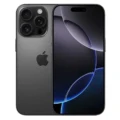

|
Disclaimer Note
We always try our best to keep our website content and information updated and correct, the material and information contained on our website is for general information purposes only, You should not rely upon the material and information as a basis for making any business, legal or any other decisions.
